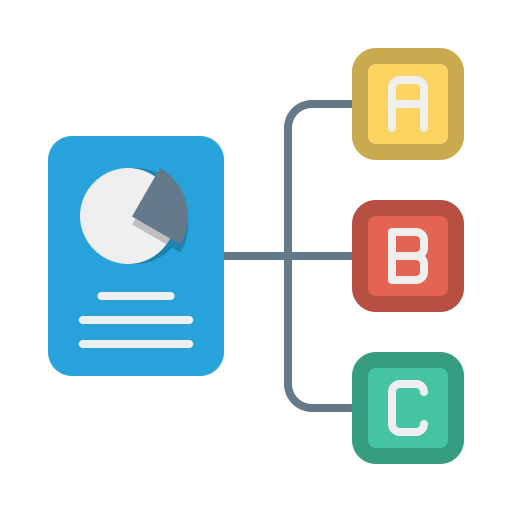DMO-DIPLOMA IN TALLY PRIME
- Real Time Experts as Trainers
- Certification
- Flexibility
- Duration 4 Months
- LIVE Project
DIPLOMA IN PYTHON PROGRMMING & MYSQL
Introduction to DIPLOMA IN PYTHON PROGRMMING & MYSQL (Duration 6 Months)
Python Programming

Data Types
Data types define the kind of data a variable can hold, like numbers, text, or true/false.

Inheritance
Inheritance allows a class to acquire properties and behaviors from another class.

Variables
Variables are named storage locations used to hold data values during program execution.

Arrays
Arrays store multiple values in a single variable using index positions.
- Introduction to Python: History, Features, and Setting Up the Environment
- Basic Syntax, Variables, and Data Types
- Operators and Expressions for Performing Calculations
- Conditional Statements: if, if-else, nested if-else
- Looping Concepts: for loops, while loops, and nested loops
- Control Statements: break, continue, and pass
- String Manipulation: Accessing, slicing, and modifying strings with built-in methods
- Lists: Creating, accessing, modifying lists using operations and functions
- Tuples: Immutable sequences with operations and methods
- Dictionaries: Key-value data structures for storing and accessing data efficiently
- Functions: Defining, calling, and using various types of functions including anonymous (lambda) functions
- Scope: Local and global variables, function arguments
- Modules and Packages: Importing built-in modules (math, random), and organizing code
- File Handling: Reading and writing data from files, working with input/output
- Exception Handling: Managing errors using try, except blocks
- Object-Oriented Programming: Creating classes and objects, using attributes, inheritance, overloading, overriding, polymorphism, and data hiding
- Data Structures: Introduction to built-in data structures used for storing and manipulating data
DIPLOMA IN PYTHON PROGRMMING & MYSQL (DURATION- 6 MONTHS)
COURSE COVERAGE
✦ Introduction to Python
✦ History
✦ Features
✦ Working with Python
✦ Basic Syntax
✦ Variable and Data Types
✦ Operator and Expressions
✦ Conditional Statements
✦ If – If- else
✦ Nested if-else
✦ Looping – For – While
✦ Nested loops
✦ Control Statements
✦ Break
✦ Continue
✦ Pass
✦ String Manipulation
✦ Accessing Strings
✦ Pass
✦ String Manipulation
✦ Accessing Strings
✦ Basic Operations
✦ String slices
✦ Function and Methods
✦ Lists
✦ Introduction
✦ Accessing list
✦ Operations
✦ Working with lists
✦ Function and Methods
✦ Introduction
✦ Accessing tuples
✦ Working
✦ Dictionaries
✦ Introduction
✦ Working
✦ Dictionaries
✦ Working with dictionaries
✦ Properties
✦ Functions
✦ Function Arguments
✦ Anonymous functions
✦ Global and local variables
✦ Modules
✦ Importing module
✦ Math module
✦ Random module
✦ Packages
✦ Composition
✦ Input
✦ Output
✦ Composition
✦ Printing on screen
✦ Reading data from keyboard
✦ Opening and closing file
✦ Reading and writing files
✦ Functions
✦ Exception Handling
✦ Exception
✦ Except clause
✦ OOPs concept
✦ Class and object
✦ Attributes
✦ Inheritance
✦ Overloading
✦ Overriding
✦ Data hiding
✦ Polymorphism
✦ Data Structure
✦ Client / Server Concepts
✦ Relational Model
✦ Data Definition Using SQL
✦ Modify Tables
✦ Relational Model
✦ Data Definition Using SQL
✦ Using ALTER TABLE Queries
✦ Add a Column
✦ Using ALTER TABLE Queries
✦ INSERT and DELETE Queries
✦ UPDATE Queries
✦ Using Select Queries SELECT
✦ WHERE
✦ LIMIT
✦ ORDER BY
✦ GROUP BY
✦ Constraints and Indexes
✦ Views
✦ Expressions
✦ Grouping
✦ Using Functions
✦ Math Functions
✦ Compare String values
✦ Work with Dates
✦ Compare String values
✦ JOIN and Subqueries
✦ Advanced MySQL Query Processing
MySQL Database Management
- Understanding Client/Server Concepts and the Relational Database Model
- Creating and Modifying Tables using SQL (CREATE, ALTER, DROP)
- Managing Data with INSERT, DELETE, and UPDATE Queries
- Using SELECT Queries with WHERE, LIMIT, ORDER BY, GROUP BY, and JOIN
- Applying Constraints, Indexes, and Primary Keys for Data Integrity
- Creating and Using Views for Simplified Data Access
- Performing Data Grouping, Aggregation, and Filtering
- Working with Built-in Functions: Mathematical, String, and Date Functions
- Writing JOINs and Subqueries for Advanced Data Retrieval
- Exploring Advanced Query Processing Techniques for Efficiency
- Advanced Query Processing techniques to improve data handling
Frequently Asked Questions (FAQ)
Yes, this course is perfect for beginners. All concepts are taught from the basics with practical, hands-on sessions.
Yes, the course includes hands-on practice with real-time examples
Yes, you will receive a recognized course completion certificate.


